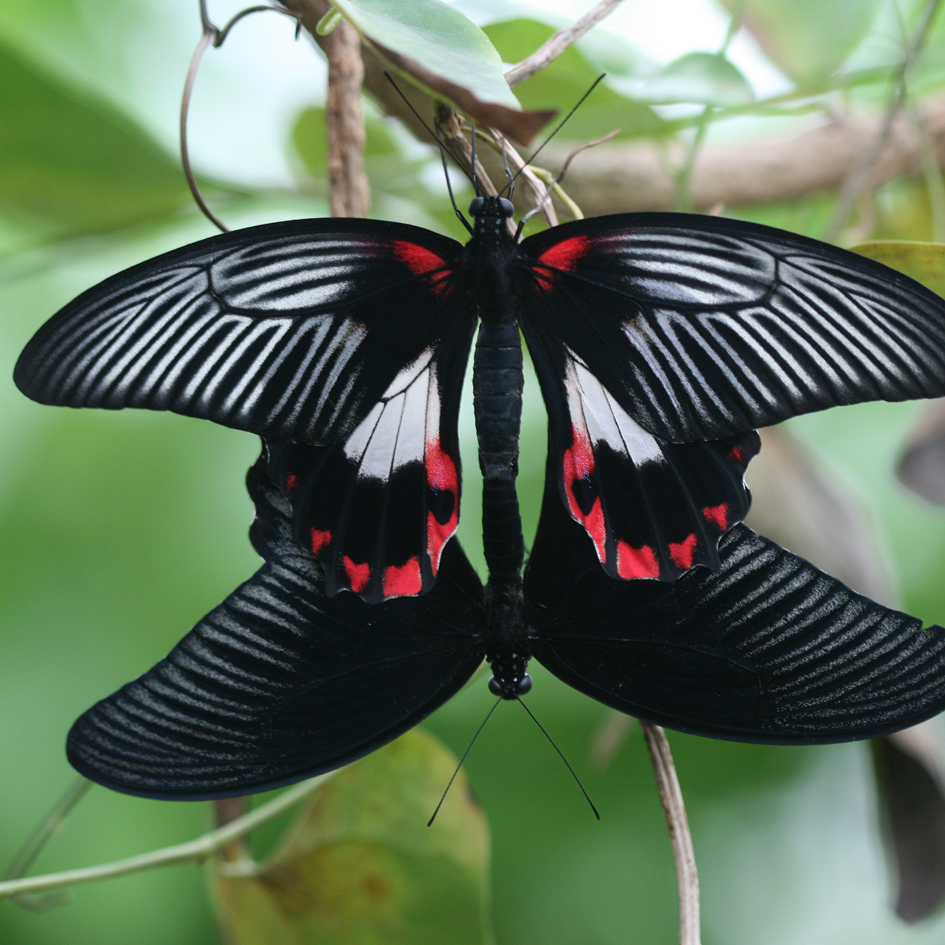
Papilio memnon (Papilio memnon)
Phylum — arthropoda
Class — insecta
Order — lepidoptera
Family — papilionidae
Genus – papilio
Appearance
Newborn caterpillars are light beige with long branched spines. The younger caterpillars are light brown with pale yellow spots. The older caterpillars are smooth, dark green with an eye-shaped spot on the front end of the body and broad light gray stripes.
The butterfly is large with a 120 to 150 millimeters (4.7 to 5.9 in) span. Papilio memnon is polymorphic, i.e. it produces several different color forms. Males of all forms are black, finely peppered with greenish or blue scales.
Females exist in at least 20 varieties, some of which have spatulate tails while others are tailless. In most female forms the forewings are brown with dark intraneural streaks. The hindwings are black with patches of red, orange and/or white. Papilio memnon can be distinguished from most other Papilio species by the presence of a red patch at the base of the wings on the underside.
Habitat
Papilio memnon occurs in India, Nepal, Myanmar, Thailand, Laos, Cambodia and China.
Behavior
Butterflies demonstrate daily activity. Butterflies fly high above the treetops. Males sometimes imbibe mineralized moisture from wet ground but both sexes are more commonly seen when nectaring at flowering bushes.
Like other caterpillars of this family, the caterpillars of this butterfly have an osmetrium – a gland behind the head that extends in danger and looks like two long, brightly colored "horns".
Diet
The larvae feed on a wide range of foodplants including Fortunella, Poncirus, Severenia, Atalantia, Paramygnia, Toddalia, Xanthoxylum, Citrus (Rutaceae), Magnolia, Michelia (Magnoliaceae) and Aristolochia (Aristolochiaceae).
Butterflies feed on nectar.
Reproduction
For their reproduction you need a terrarium with a size of 50 x 50 x 70 cm. The females lay their eggs one at a time on the underside of the leaves of the forage plant. The eggs are yellow-green, spherical, 1.8 mm in diameter. The incubation period is 3 days. It is better to keep the caterpillars in containers with a mesh lid for 6-8 insects. In the container, you need to place a forage plant. The caterpillar develops for about a month. The temperature in the container is 23-25 oC at the humidity of 60-70%. The pupae are green with two small horns on the head. The pupa stage lasts 10-14 days.The butterfly lives 5-7 days.
In captivity
The mesh terrarium with a size of 50 × 50 × 70 mm is suitable for keeping butterflies. Room temperature is necessary. Daylight time is 12 hours. You can feed the butterflies with honey syrup diluted with boiled water in a ratio of 1: 10.
 Russian
Russian
 English
English























